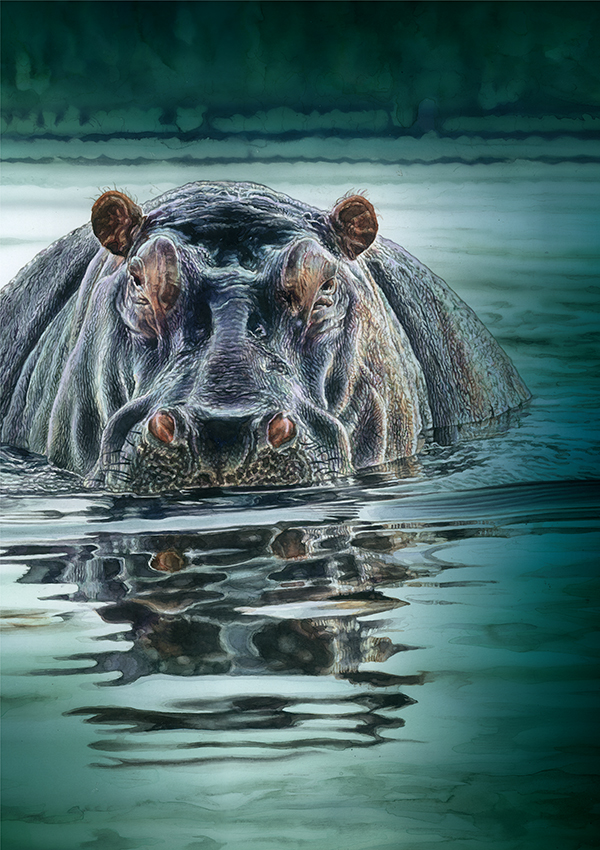ENDANGERED SPECIES
Hippopotamus amphibius
FATRO “WILDLIFE” COLLECTION
Hippopotamus amphibius
FATRO “WILDLIFE” COLLECTION
The hippopotamus is a large African herbivorous mammal. The origin of its name dates back to ancient Greece, when it was called “river horse”; indeed, it cannot swim, but it “gallops” on the bottom of rivers. It is one of the two species of the Hippopotamidae family which are still in existence (two more went extinct recently). Its length varies from 3 to 5 metres in adult males and its height at withers is 150 cm; on average, its weight is around 1,500 – 1,800 kg, but old individuals over 3 tons are not rare. Its large eyes, its nostrils and its small and mobile ears are located in the upper part of the muzzle and are at the same height, enabling the animal to remain flush with the water and control its territory. When it dives in, its nostrils and ears close. Adults have between 36 and 40 teeth. Their canines, sharp and pointed, grow constantly and can reach a length of 50 centimetres and a weight of 3 kg in males and 1 kg in females, which make them very effective weapons.
Male hippopotamuses do not mate before the age of 6-13, females are not receptive until the age of 7-15.
Due to climate change and the spreading of agriculture, their density has lowered noticeably.
Male hippopotamuses do not mate before the age of 6-13, females are not receptive until the age of 7-15.
Due to climate change and the spreading of agriculture, their density has lowered noticeably.

